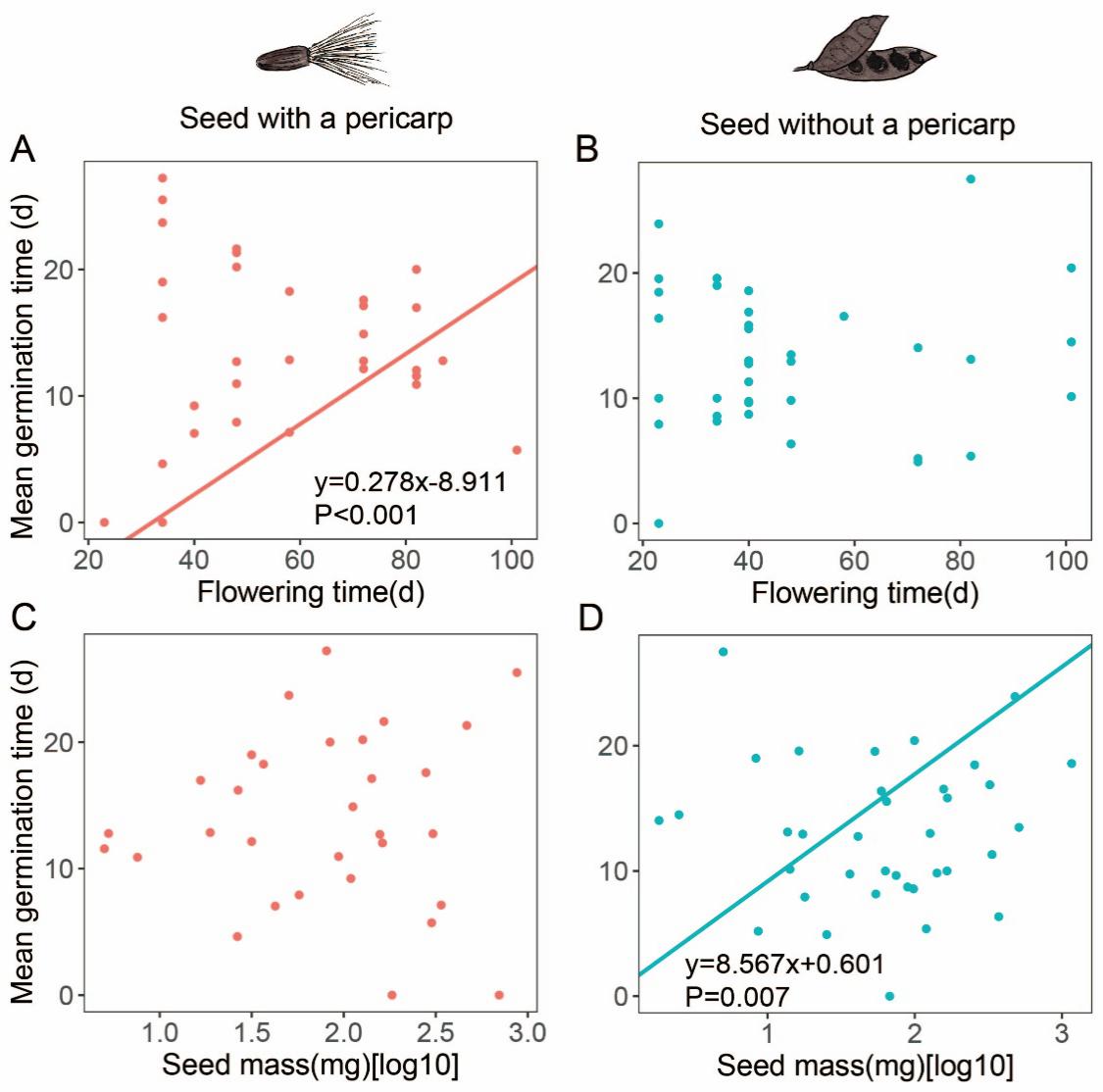Dry fruits are divided into dehiscent and indehiscent types based on whether the pericarp splits open after reaching maturity. As a maternal tissue, the pericarp may provide seeds with different germination strategies. The germination strategies of seeds with and without pericarp may be associated with maternal conditions and intrinsic resources. However, the interplay between maternal conditions, seed mass, and seed type in the germination strategy remains unclear.
Researchers at the Wuhan Botanical Garden (WBG) of the Chinese Academy of Sciences conducted germination experiments with seeds from a species-rich alpine meadow in the Hengduan Mountains to find out whether and how the germination strategies of seeds with and without pericarps were influenced by maternal conditions (quantified by flowering time) and intrinsic resource levels (seed mass).
The researchers found that seeds with and without pericarps use distinct germination strategies. Germination rate for seeds with pericarps depends on the flowering time, an estimator of maternal condition, while for seeds without pericarps, it is associated with their own resource level, the seed mass.
The results enrich the understanding of seed ecology by incorporating ecologically mediated maternal conditions and inherent genetical properties.
The study was published in Annals of Botany titled "Mother-reliant or self-reliant: the germination strategy of seeds in a species-rich alpine meadow is associated with the existence of pericarps."
 The mean germination time (in days) in relationship to flowering time (in days; a, b) and seed mass (in milligrams; c, d) of seeds with a pericarp (red) and seeds without a pericarp (blue) (Image by WBG)
The mean germination time (in days) in relationship to flowering time (in days; a, b) and seed mass (in milligrams; c, d) of seeds with a pericarp (red) and seeds without a pericarp (blue) (Image by WBG)